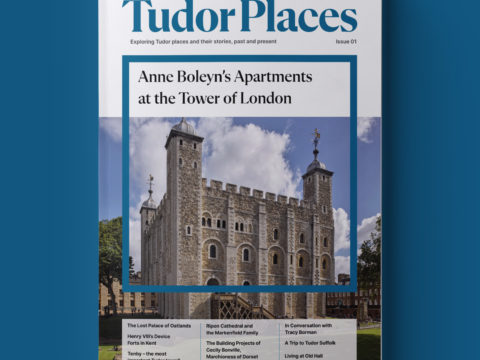Jasper Tudor: Life Story
Chapter 12 : Yorkist Squabbling
In a further crack-down on Lancastrian sympathisers, the young Earl of Oxford was arrested and imprisoned in the Tower. Following his father and brother’s execution, he had been allowed to inherit his title, and been created a Knight of the Bath for Elizabeth Woodville’s coronation, but something gave rise to suspicion, and Edward took action. Oxford was pardoned in April 1469, but he soon joined the anti-Edward plot being fomented by his brother-in-law, Warwick, and the King’s brother, Clarence.
Warwick and Clarence raised rebellion against Edward in June 1469. This was not initially with the purpose of restoring the Lancastrians, but rather with the aim of restoring Warwick’s power and influence and permitting the marriage of Warwick’s daughter to Clarence – a match forbidden by Edward IV. Warwick, Clarence and Oxford all left the country for Calais, to raise men.
On 15th July 1469 Warwick landed in Kent. In a confusing series of marches and counter-marches Edward’s supporters, led by William Herbert, met Warwick and his men at Edgecote near Banbury. In the ensuing battle, Edward’s army (he was not present himself) was heavily defeated and Herbert was killed.
Herbert had been accompanied by his ward, Henry Tudor, who at 13, was still too young to fight. The boy was led away from the battlefield either by one of Herbert’s friends, Sir Richard Corbet, or by Herbert’s brother-in-law, Ferrers. Whichever of the men it was, Henry was taken to the Devereux home at Weobley in Herefordshire. Whilst he was there, his mother Lady Margaret Beaufort, whose husband Sir Henry Stafford had submitted to Edward IV after the Battle of Towton, sent messages and money – including 20 shillings for bows and arrows for archery practice.
The Battle of Edgecote had cut a swathe through the ranks of Welsh Yorkists. Herbert had been a notable patron of traditional Welsh bardic culture, and there was an outpouring of poetry urging support for a leader who would avenge the death of their hero, Gwilym Ddu. It did not much matter whether that leader was a Yorkist or a Lancastrian. This was to stand Henry Tudor and Jasper in good stead in 1485.
Warwick was now in control and captured Edward IV before the latter could raise fresh troops. The King was obliged to go first to Warwick Castle, and then to Middleham, in Yorkshire. Unfortunately for the Earl, however, he was in no way able to rule the country without Edward’s authority. The other Lords simply would not listen to him. As rioting and unrest increased throughout the country, Warwick was obliged to free King Edward on 10th September.
Edward agreed to pardon all of those who had been involved in the attempted coup, including both Warwick and Clarence. Edward was a shrewd man – always genial and charming, he avoided bloodshed unless there were positive gains to be had and he often gave rebels a second chance – although if he was pushed too far, he could be ruthless.
The King then led an army north to put down Lancastrian incursions there, before returning to London. To replace Herbert in Wales, Edward promoted his close friend, William, Lord Hastings, as Justiciar of North Wales and his younger brother, Richard, Duke of Gloucester, just 17 years old, to the office of Constable of England.He also granted him the Earldom of March, the largest and most powerful of the Marcher lordships, covering much of the southern border between England and Wales.
There is no evidence of Jasper’s location during this period of turmoil, but by October 1469 he was certainly at the court of Louis XI where he remained until September 1470, receiving a monthly pension of one hundred livres tournois.
Warwick and Clarence, having been forgiven for their treachery, seemed unable to leave well alone. Warwick was suspected of stirring up trouble in Lincolnshire between Lord Welles and Sir Thomas Burgh. Edward IV won a swift victory over Welles’ men at Losecoat Field on 12th March and Welles implicated Warwick and Clarence in his illegal activities before being executed.
The jig was now up for Warwick. He and Clarence fled to Calais taking Warwick’s daughter, Isabel, who was Clarence’s duchess, with them even though she was heavily pregnant and in fact she miscarried during in a storm in the Channel.
Sir Jasper Tudor
Family Tree







